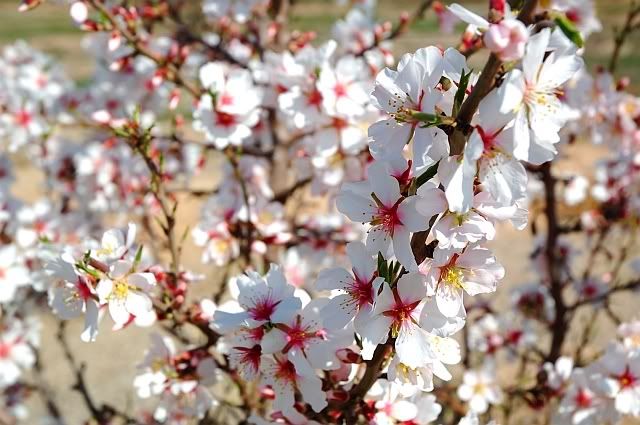
Nature has gifted us with an abundance of breathtaking sights, and one such marvel is the delicate and enchanting almond flower. Almond trees, scientifically known as Prunus dulcis, belong to the Rosaceae family and are native to the Middle East and Mediterranean regions. These stunning blossoms announce the arrival of spring, transforming vast landscapes into beautiful tapestries of white and pink hues.
The almond tree's blossoming season is a magical time, typically occurring in late winter or early spring, before the emergence of leaves. As the winter chill gives way to the gentle warmth of the sun, the almond trees awaken from their dormant state. The flowers burst forth, adorning the branches with clusters of soft, fragrant petals. It is a sight that evokes a sense of joy and anticipation, symbolizing the rejuvenation and renewal of nature.
Almond flowers are small, measuring only about an inch in diameter, and possess a five-petal structure. These petals can vary in color, ranging from pure white to shades of pale pink. Each blossom showcases a vivid center, composed of a multitude of stamens and a single pistil. The stamens bear the pollen-producing anthers, while the pistil holds the ovary, which eventually develops into the almond fruit.
The scientific name of the almond flower is Prunus dulcis var. dulcis, and it is closely related to other members of the Prunus genus, including cherries, peaches, and plums. This shared lineage is evident in the similarities in their flower structure and the overall appearance of the trees.
Almond trees have a rich history and are deeply intertwined with the culture and heritage of many regions. One such place where almond trees hold a special significance is Catalonia. The gentle Mediterranean climate and fertile soils of Catalonia provide an ideal environment for almond cultivation, making it one of the prominent almond-producing regions in Europe.
The almond blossoms are not only visually stunning but also play a crucial role in the pollination process. Bees and other pollinators are drawn to their nectar and pollen, ensuring the cross-pollination necessary for the production of almonds.
The blossoming period of almond trees in Catalonia typically occurs between January and February, marking the arrival of spring. It is a time of celebration, and local communities often organize festivals and events to honor the beauty and significance of the almond flowers. Visitors can immerse themselves in the exciting atmosphere, enjoying traditional music, dances, and local delicacies made with almonds. For example, in many towns of Lleida numerous activities are organized around almond trees in bloom. Check this interesting blog with pictures at Les Garrigues, Lleida.
The next time you witness the gentle embrace of almond blossoms, take a moment to appreciate the intricate beauty and botanical marvels they represent.